Monument to Victor Emmanuel II
The center of ancient Rome is separated from the modern one by a huge monument erected in honor of the Padre della Patria (Father of the Fatherland), King Victor (Vittorio) Emmanuel II of Piedmont, who became the first monarch of a united Italy. The inhabitants of Rome call it simply Il Vittoriano. On March 17, 1861, the Congress of Independent States of the Apennine Peninsula met in Turin, where it was decided to create the Italian Kingdom. The King of Piedmont was elected head, and the new state also received the Piedmont Constitution. However, Rome remained under papal rule for another ten years. Victor Emmanuel II solemnly entered Rome on July 2, 1871, where he uttered the historic words:"We have come to Rome and will remain in it."
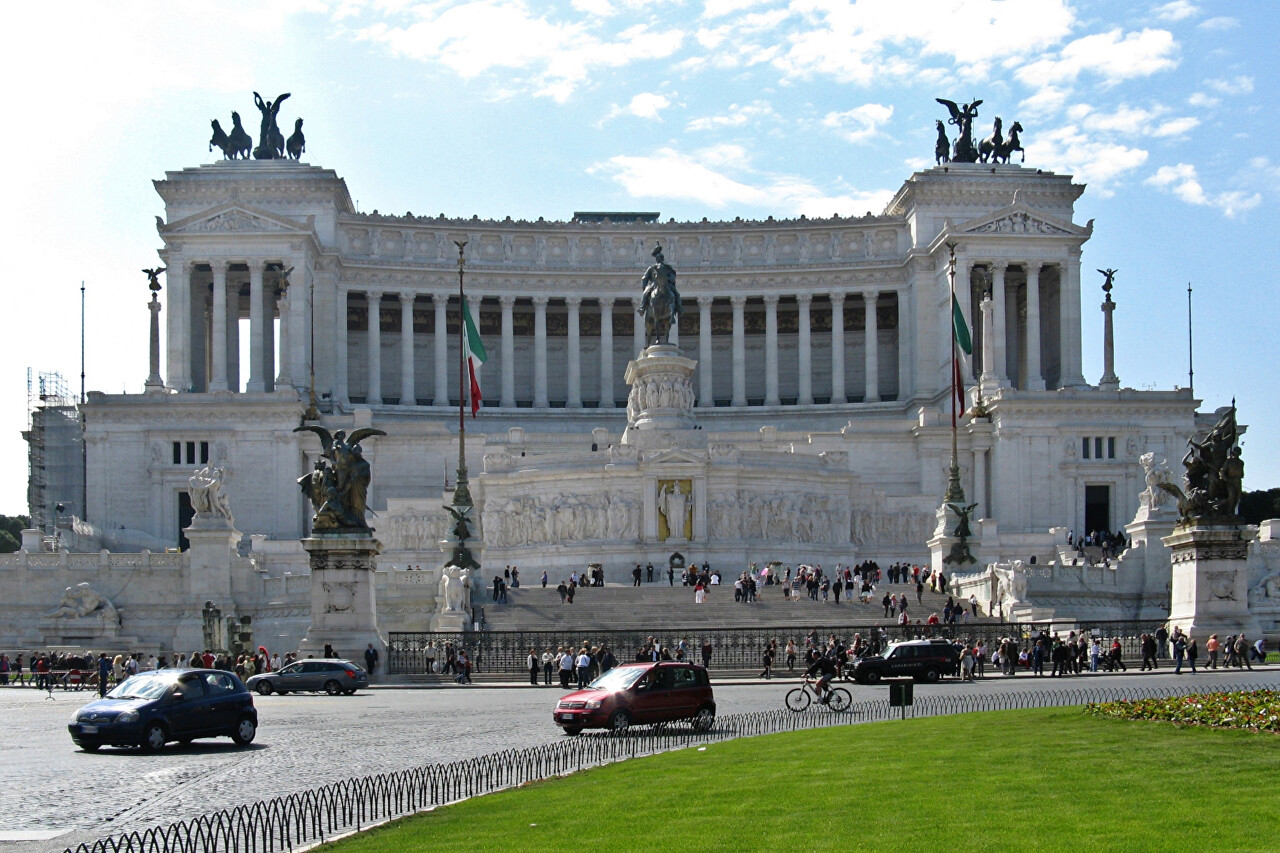
In 1878, the first king of Italy died and the government decided to perpetuate his memory by erecting a grand memorial complex on the slope of Capitoline Hill. Two years later, an international competition was announced, which was won by the project of the French architect Henri-Paul Neno, but in the end, the project of a foreigner was not approved for patriotic reasons. Only Italians were allowed to re-enter the competition, and in 1883, out of 98 projects, the work of an unknown young architect Giuseppe Sacconi from the town of Montalto delle Marche was selected.
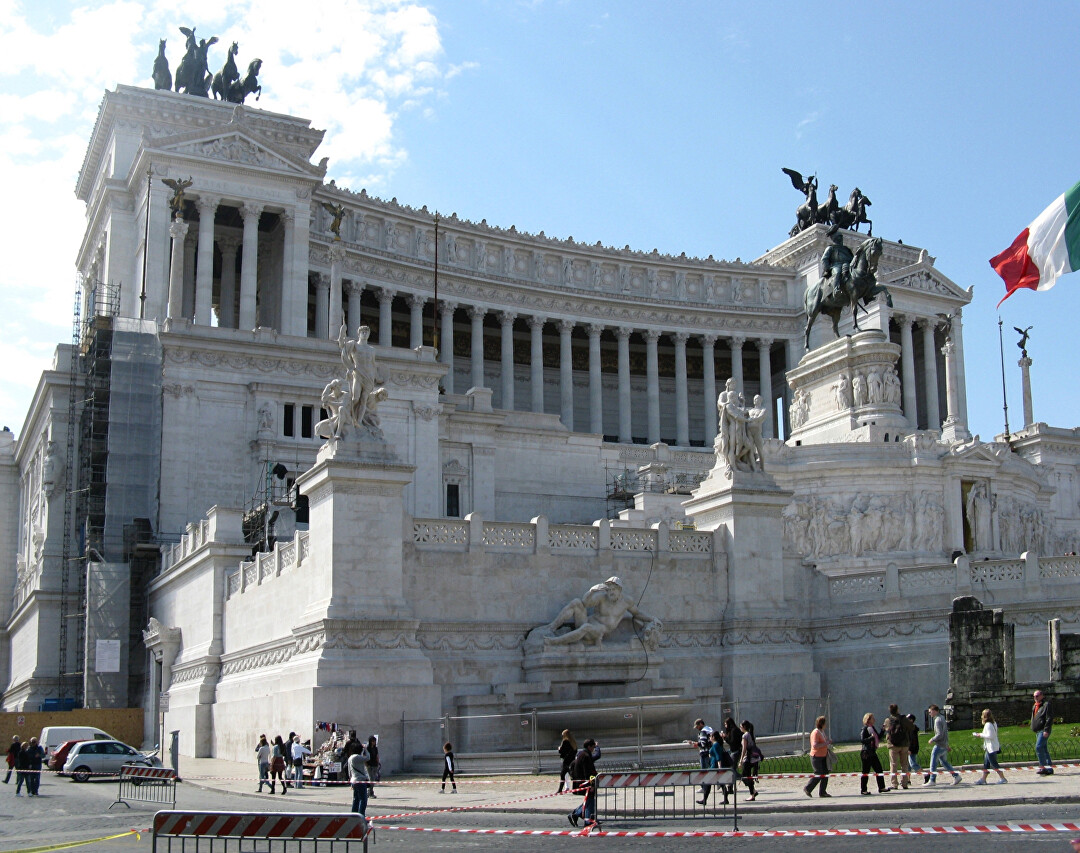
Construction began in 1885 on the site of a medieval building. The state confiscated many buildings that were demolished, while the Tower of Paul III, the Arch of San Marco, the Aracelli monastery disappeared. During the excavation work, the ruins of a large house built in the 17th century - Insula Aracelli-were discovered. The author of the monument died in 1905, and the construction was continued by architects G. Koch, M. Manfredi and P. Piacentini. The still-unfinished complex was inaugurated by King Victor Emmanuel III on June 4, 1911. This event was the main event of the primeval celebrations dedicated to the fiftieth anniversary of the unification of Italy. Construction work continued until 1935, the final price of the monument was 27-30 million liras, exceeding the original estimate by three times.
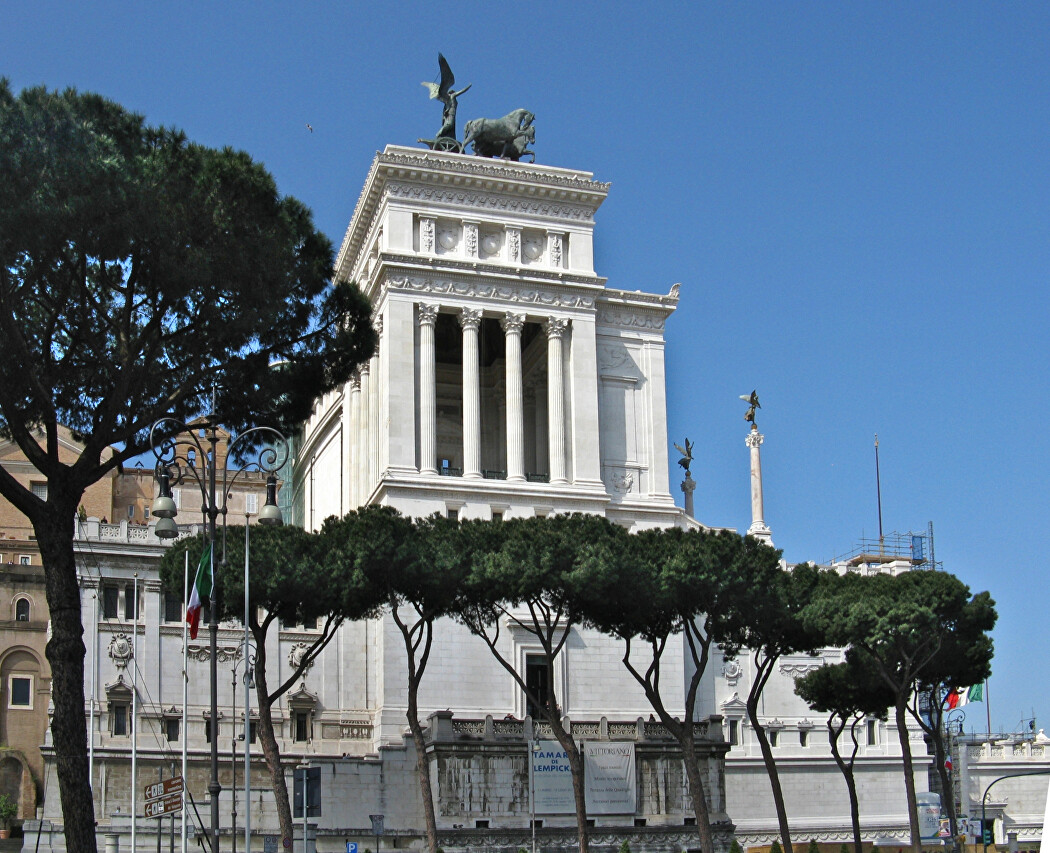
The quadriga, one of which symbolizes Unity, by the sculptor Carlo Fontana (pictured), and the other Freedom, by Paolo Bartolini, were erected in 1924-27.
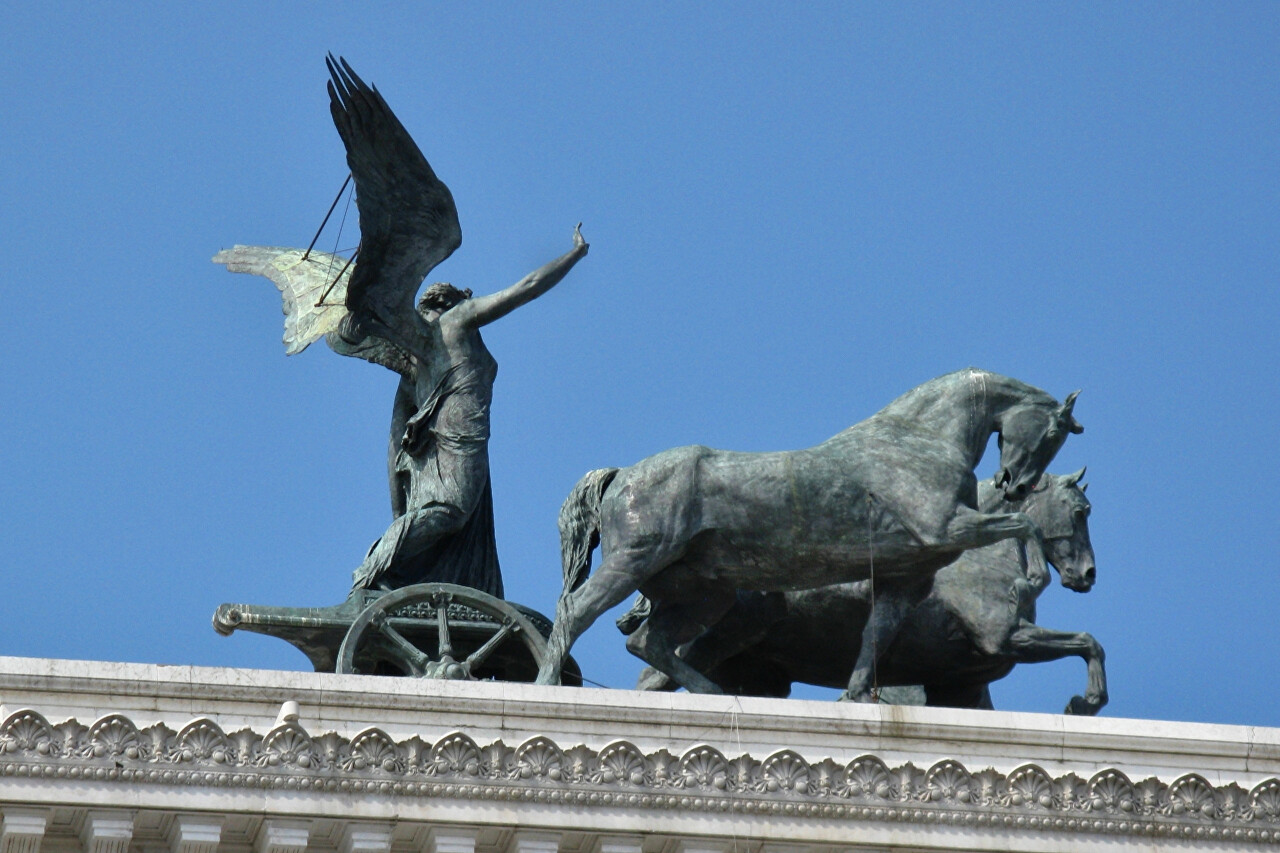
On the staircase there is an equestrian statue of Victor Emmanuel II, called" Altare della Patria " (Altare della Patria), the work of sculptor Angelo Zanelli.
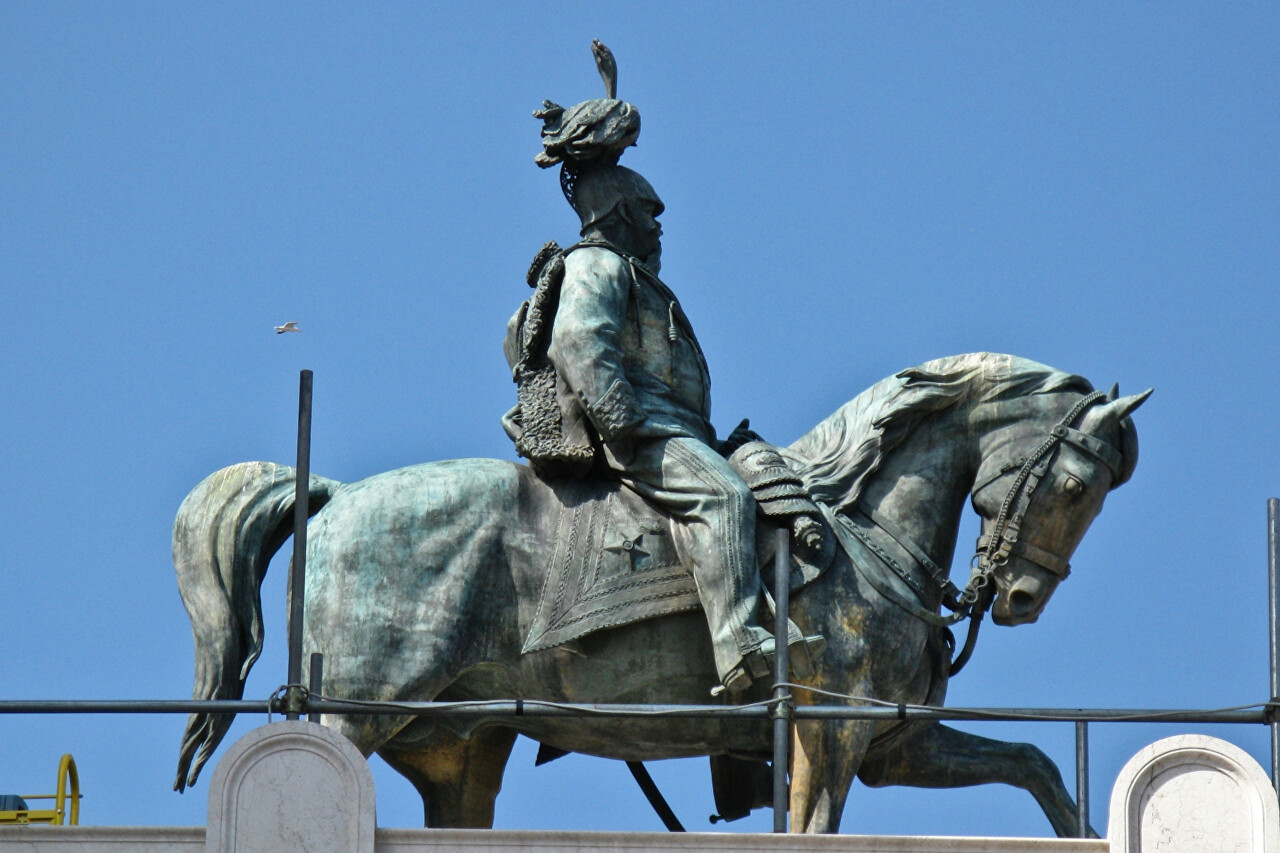
At the bottom, on each side of the staircase, there are two compositions: Thought (Il Pensiero), by the sculptor Giulio Monteverde and Action (L'Azione), by Francesco Gerace (pictured). There are six such compositions in total, they reflect the national values of Italians, while others are called Consent, Strength, Sacrifice and Law. In front of the portico, four statues of Victoria are placed on four triumphal columns.
